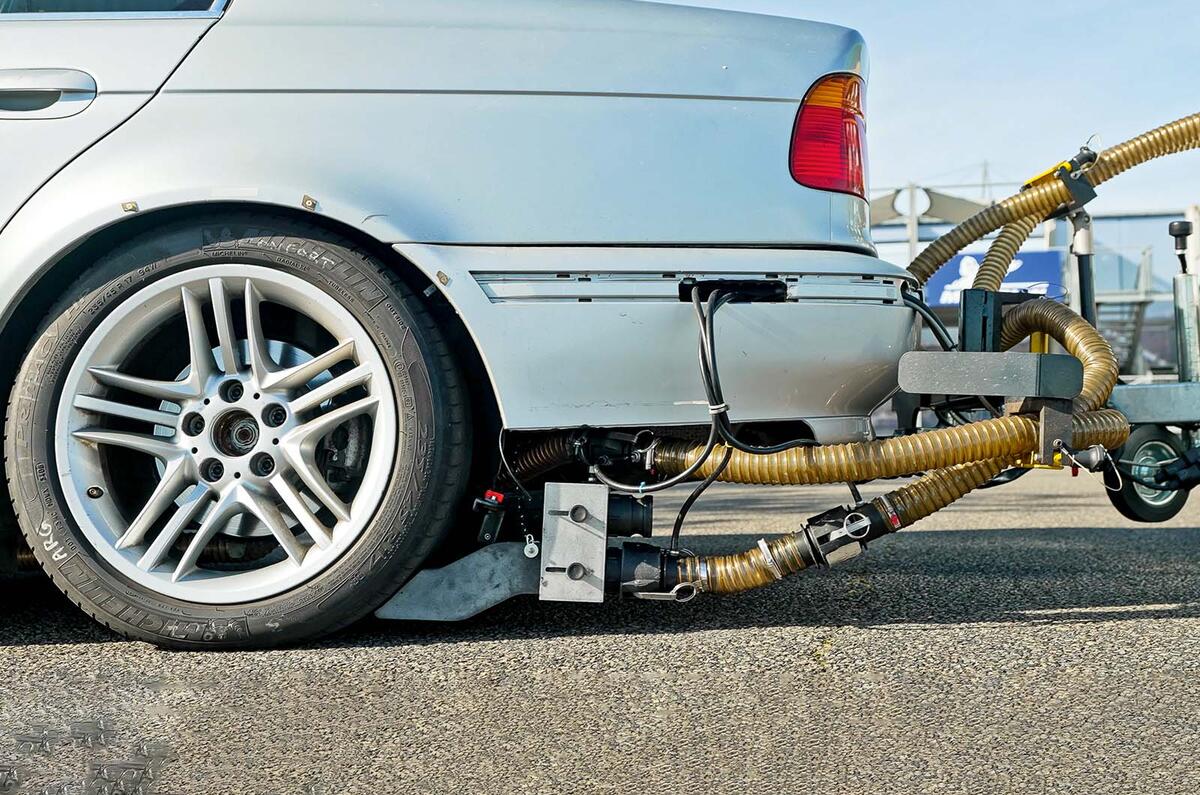Euro 7 emissions regulations, the toughest yet, will come into force in July 2025.
As the emphasis shifts from combustion-engined vehicles, so the attention falls on other factors, such as non-exhaust particulate matter from tyres and brakes.
The new standards will be the first globally to move beyond tailpipe emissions and set limits for brake and microplastic tyre particles.
Naturally, tyre companies haven’t been sitting on their hands. Michelin has been researching tyre wear particulates for the past 20 years; in the UK, engineering consultancy Ricardo, working with Arup, last year published a report, prepared for the Department for Transport, on how to measure them.
The European Commission will produce a report by the end of this year to review measurement methods and the subject of tyre abrasion in general. The latest proposal is that emissions of PM10, which means particulates of 10 microns or less in diameter, will be limited to 3mg/km (3000th of a gram every kilometre, or roughly 5mg per mile).
How small is 10 microns? By comparison, a human hair is 50-60 microns in diameter. The smaller particulates get, the worse their potential effects: research indicates that ultra-fine particles (PM 0.1) are among the most damaging to human respiratory systems.
Regulating for something is one thing, but how do you set about measuring something so small? With a large vacuum cleaner, that’s how. Michelin has revealed what looks like a refreshingly straightforward way of measuring tyre particulates using suction and a two-stage measuring system.
The first part draws in air from the front of the test car to give a background measure of the ambient particulates from pollen, industrial and domestic heating and any other sources. This is then compared with the particulate samples taken from directly behind a tyre.
Each set of samples passes into a filtration system towed behind the car. This traps particles according to size, from 10 microns to six nanometres (a nanometre is one billionth of a metre).
The next stage is separation, where the source of the particles in each of the filters is identified using a pyrolysis process to isolate the tyre particles. Finally, the sampling phase quantifies the proportion of particles by size.
Michelin says it obtains less than 1% of PM10 and less than 0.6% of PM2.5 directly from the tyre, and the particles are a concoction of 50% tyre rubber and 50% minerals plus other road surface materials. The total particles produced by tyre wear that remain suspended in the air (known as aerosols) are on average 1.3% PM10 and just 0.16% PM2.5.
Michelin is sharing the design of its equipment with the rest of the tyre industry. The European Tyre & Rubber Manufacturers Association plans to conduct large-scale research starting this year, in collaboration with an independent third party.




Join the debate
Add your comment
Yeah, but where were they when VAG was pumping out all the diesel emissions, they didn't know anything about it, did they.They are an agency that has no reason to exist if they cannot come up with something new to legislate against, and just to add that vehicles banned in the UK ULEZ zone have been donated and sanctioned for use in Ukraine, because Ukraine is obviously not located on the Earth. The people in charge made people buy newer cars while allowing their old cars to be driven around freely elsewhere because it suits a different political agenda. I'm trying my best not to buy any more vehicles.
Ever wondered why cancer is becoming ever more prevalent?
And yet yesterday I followed a derecpit old van pumping out huge amounts of black smoke with no MOT (I checked online) and the police car it drove past did nothing. So why bother??!!
Not enough Police?, takes too long to book someone for a minor offence? take your pick, you see nearly every day a car with a defect, they don't have to stop them, they just run the number plate through computer, it'll tell them all about the car and the registration, no need to stop saves time, you hardly see an officer with a speed gun these days, speed trap vans? Everyone knows when and where so they slow down there or use another route shoving the problem onto another road, defective cars?, some owners can't afford to fix there cars and they take a chance, who's fault is that?